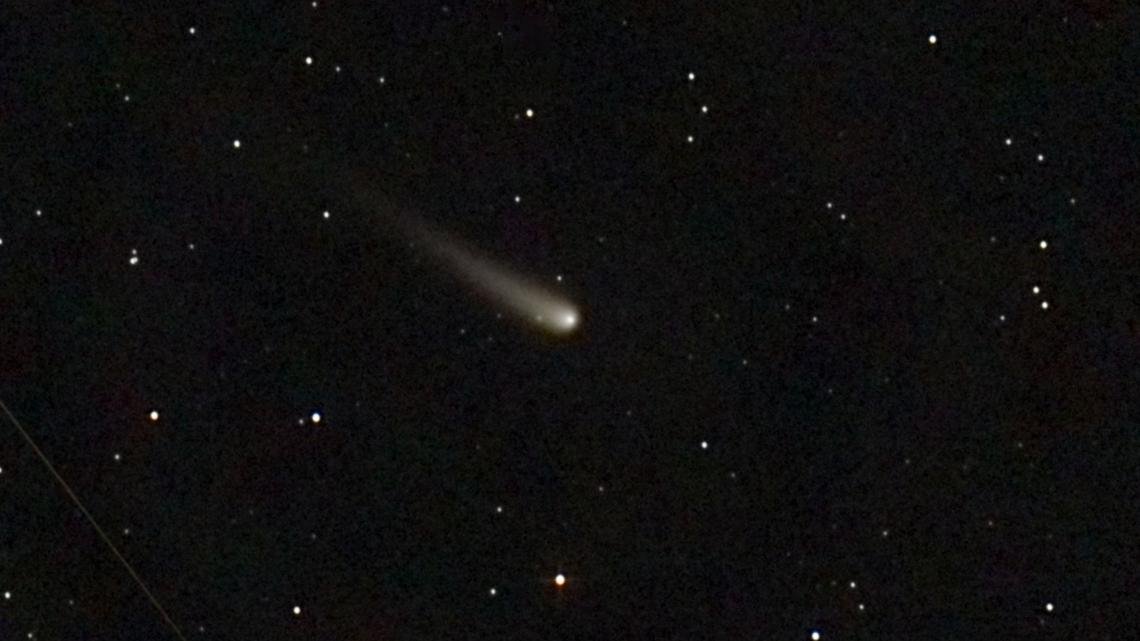aerospace
Catch a Glimpse of a Dazzling Rare Comet This Weekend!

A rare celestial event is set to captivate stargazers as a bright comet is on its way to Earth. This natural phenomenon promises a vibrant display, visible without telescopes or binoculars.
Named Comet Tsuchinshan-Atlas, the space rock will make its closest approach on Saturday, illuminating the night sky. Observers can expect to see it until the end of October, contingent on clear weather conditions.
Sally Brummel, a planetarium manager at the Bell Museum in Minnesota, describes what viewers can expect. “It’ll be this fuzzy circle with a long tail stretching away from it,” she explained, highlighting the comet’s distinctive appearance.
Comets serve as remnants from the formation of the solar system, consisting of frozen material that releases gas and dust when it nears the sun. This process creates their iconic tails, which can be observed from Earth.
This year has seen significant comet sightings, including a green comet that last approached Earth 50,000 years ago. Historically, notable comets like Neowise, Hale-Bopp, and Hyakutake have also graced our skies, making this time an exciting period for astronomy enthusiasts.
Discovered last year, Tsuchinshan-Atlas is also identified as C/2023 A3. Its discovery is credited to observatories in China and South Africa, and meteorologists trace its origin to the Oort Cloud, far beyond Pluto. Following its closest approach at a distance of approximately 44 million miles from Earth, the comet is not expected to return for another 80,000 years.
According to Larry Denneau, a leading researcher associated with the Atlas telescope, many comets are discovered annually. However, most either perish when nearing the sun or remain too distant for visibility without specialized equipment.
Those eager to witness this extraordinary event should plan to go outside about an hour after sunset on clear nights, directing their gaze westward. Both northern and southern hemisphere dwellers will have the opportunity to observe this dazzling comet.
















